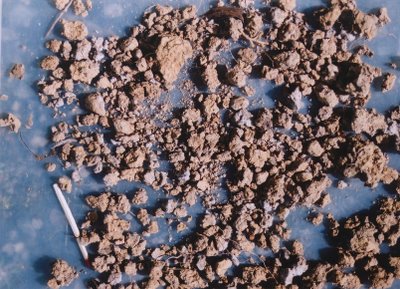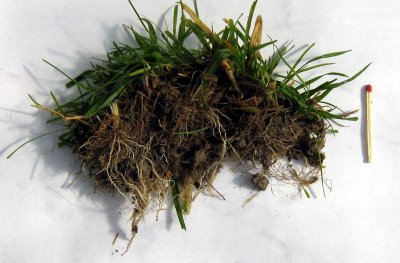The Water Fern Azolla filiculoides
I have not been able to find much on the internet about this little water fern so have had to look at it myself. The roots look like I expected them to but under higher magnification there appeared to be many little root hairs, but then each one looked like club shaped bristles covering the whole root, just like a bottle brush. I then looked at the roots of the duck weed Lemna minor
and found it strange that they should be the same even though they are not at all related. Maybe the rootlets are infected with a .The mycorrhiza would assist the plants in obtaining phosphorus and nitrogen from the water while they in turn benefit by obtaining energy from the plants.The design of these two species shows convergence,with both solving their problems the same way.



These two pictures show Azola filiculoides root at the top and duck weed at the bottom

On the surface of the water there is what looks like a of green smudge covering much of the pond. On examination under the microscope I was horrified to fine that is made up of tiny new plantlets of duck weed exactly like the adults but really minute. About the size of a pin prick. I was unable to photograph them as the camera would no focus.
Invasive plants gain an advantage by being able to reproduce rapidly, vegetatively and sexually. Sexual reproduction would would make for variety and those lines most adapted would produce vegetatively faster than their rivals.

Bottom picture shows small bunches of new plantlets next to of duck weed parent plants more on duckweed and water fern association
After a few weeks of the pond being almost clear the Azolla has completely covered it. The few green patches are the duck weed. The azolla is so thick that after the rain water can be seen as small pools on the surface.
An interesting fact is that Azola is used as a fertilizer in rice paddies. Work is being done on its use in South Africa.
The Duckweed Azolla Assocoation
Kingdom: Plantae
Division: Pteridophyta
Class: Pteridopsida
Order: Marsileales
Family: Azollaceae
Genus: Azolla
Species: A.filiconoides
Kingdom: Plantae
Division:Magnoliophyta
Class: Liliopsida
Order: Alismatales
Family: Araceae
Genus: Lemna
Spcies: L.minor
The Azola water fern and duck weed Lemna minor are in no way related as can be seen above. L. minor is related to the arum lilly and the water fern to the tree fern so how far apart could they be.However they have both solved their problems the same way and often live in close association, so much so that they both seem to share the same species of mycorrhiza. It appears to be an Ectomycorrhiza association with a mantel hypha sheath, a Hartig net and external hypha.I have not been able to discover any reference to the micorrhiza in any of the numerous descriptions of duck weed on the internet.None of the drawings or photos of roots show mycorrhiza.
Micorrhizas perform the task of making phosphate available to plants but it has been discovered that in fact in L. minor the roots
do not take up nutrients at all. Roots are for keeping the plant upright in the water, and by entwining with other roots as the top photo shows and keep the plants together to form a mat on the surface of the water.The nutrients are taken in through the bottom side of the leaflets. Whether this holds for the water fern as well I do not know.
L.minor is very widespread through many countries and is very invasive but not necessarily always a problem.
Another curious thing is that there are structures attached to the roots like long root hairs,these are shown in the bottom photo. The photo of the glass container is of Azolla and duckweed growing together


























